With ropes hung, routes marked, and a trained staff on hand to ensure safety, the rock gym is a great place to learn how to climb. But, pulling on plastic just isn’t the same as climbing on real rock, and many climbers eventually look to expand their horizons to local crags. If you’re considering taking your climbing outside this year but aren’t quite sure where to start, here are some things you need to know.
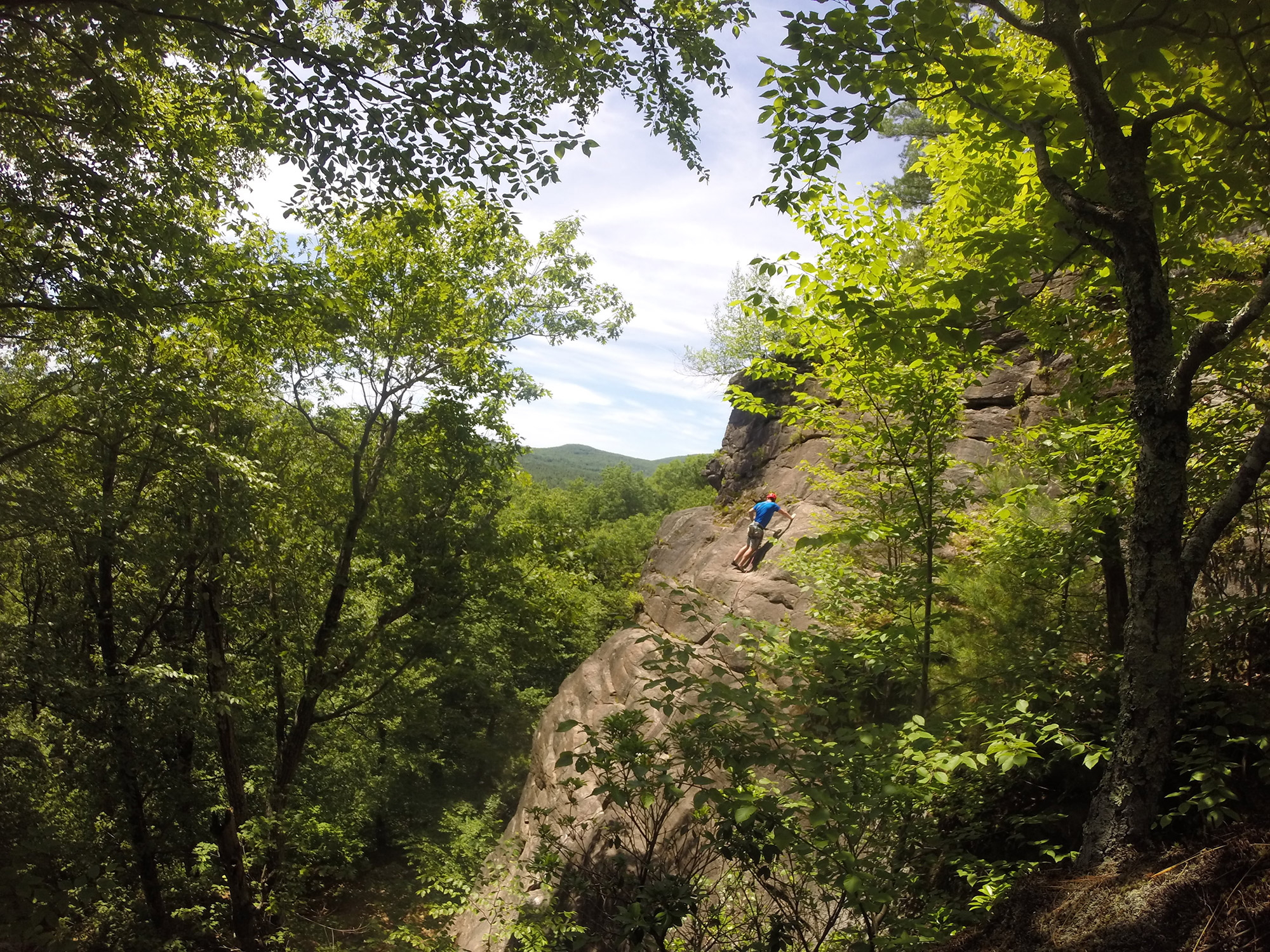
1. Pick Your Discipline, Then Get the Gear
Bouldering and top-roping are the main options for most new-to-the-outdoors climbers. Both styles involve some common gear, namely shoes and chalk, but also require some items specific to the activity. Thus, deciding on a style is an important initial step.
Bouldering is a popular way for gym climbers to transition outdoors, because it doesn’t require knowledge about anchor building or belaying. When bouldering, climbers use a crash pad, rather than a rope, to protect themselves when they fall. Bouldering crash pads come in a variety of sizes and styles, and it’s not uncommon to use multiple ones to protect your climb. Although bouldering requires less technical knowledge, the physical climbing encountered is often more difficult than what’s found on top-rope routes.
Climbers who have been top-roping in the gym can replicate that experience outside if they know how to build anchors and have the gear required to do so. The specific gear will vary between locations, but a static line, a few slings, a cordelette, and a handful of locking carabiners—larger carabiners like the Black Diamond RockLock Screwgate are great—will usually do the trick at areas with first-timer friendly setups. In addition to anchor-building gear, invest in a belay device, your own climbing rope, and a harness, if you’ve been relying on a gym rental. Top-ropers should also add a helmet to their kit, as time spent below a cliff exposes you to the threat of something being knocked down on you.
Some climbers who lead in the gym may also want to take the sharp end their first time climbing outside. For those looking to jump right into sport climbing, check out our sport climbing gear list.
2. Get the Guidebook
Doing some research before picking a destination saves a lot of time and aggravation. For example, does the area you’re planning on visiting have fixed anchors, or will you have to build your own? Guidebooks are a valuable resource for learning about what to expect at a climbing area, and offer up information on everything from where to park to what gear to bring. Although guidebooks are helpful, an internet search lets you broaden your knowledge of an area and get up-to-date information about access and conditions.
Pro Tip: If it’s your first time out, avoid routes that the guidebook says require trad gear (camming units and nuts) for building the top-rope anchor.
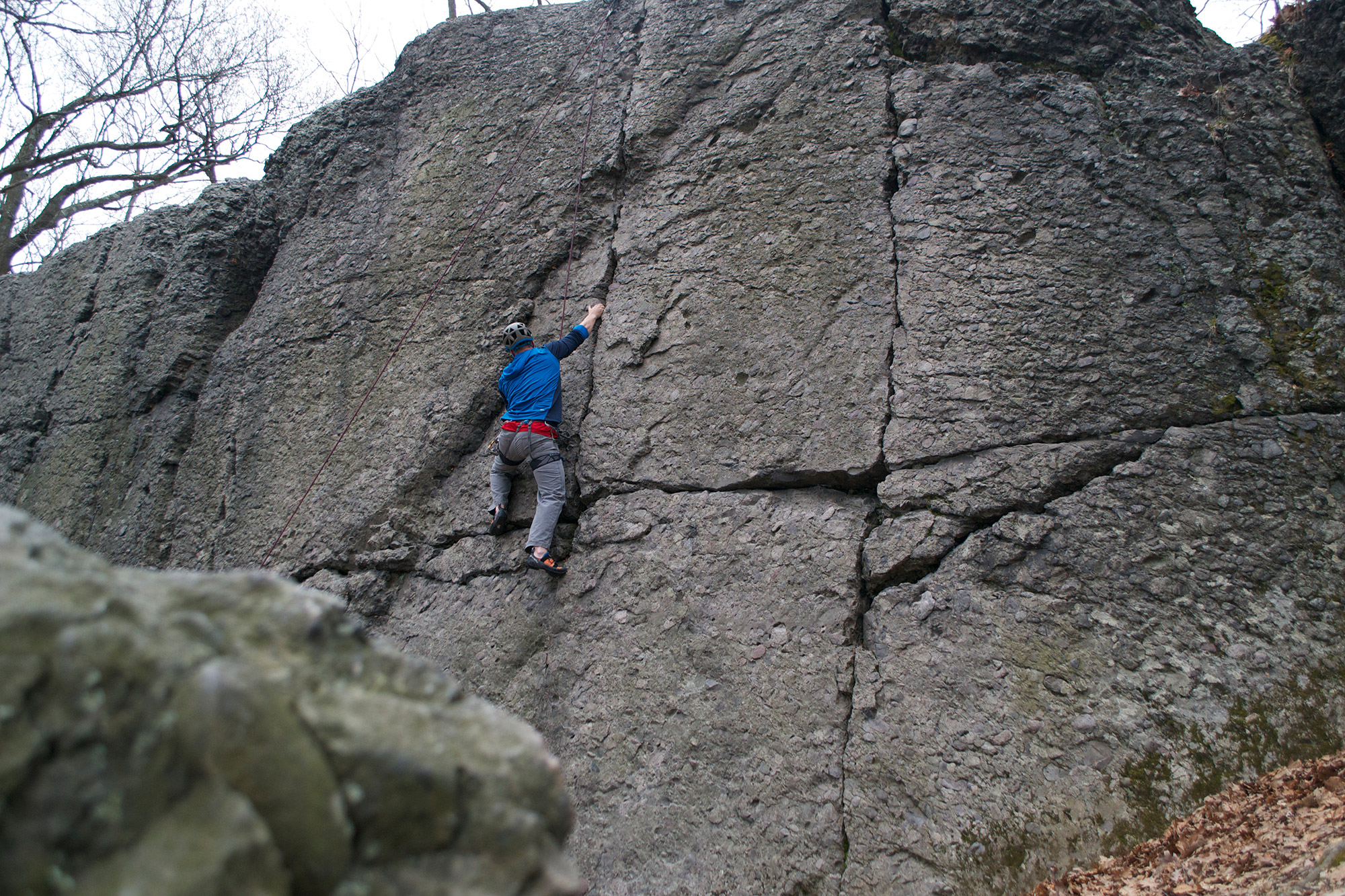
3. Pick the Right Location
Choosing the right location for your first time climbing outside can make the difference between success and frustration. Boulderers will want to find spots with a wide variety of problems and safe landings. A few popular destinations for newer boulderers in the Northeast are Hammond Pond, just outside of Boston, Massachusetts; Lincoln Woods, a short drive from Providence, Rhode Island; and Pawtuckaway State Park, about 30 minutes from Manchester, New Hampshire. Fellow gym climbers can also be a great resource, so don’t hesitate to ask around the gym’s bouldering cave about nearby areas to visit.
New outdoor climbers looking to top-rope should seek out sites with easy setups. Ideally, the location will have a diverse grouping of climbs, easy access to the cliff top, and simple anchoring solutions. Greater Boston has a plethora of excellent crags for first-time top-ropers, including Hammond Pond, Quincy Quarries, Rattlesnake Rocks, College Rock, and Crow Hill. So, too, does Connecticut, with Ragged Mountain being a popular destination.
Pro Tip: A 75- to 100-foot static line is a great solution for when the guidebook recommends bringing “long slings” for top-rope anchors.
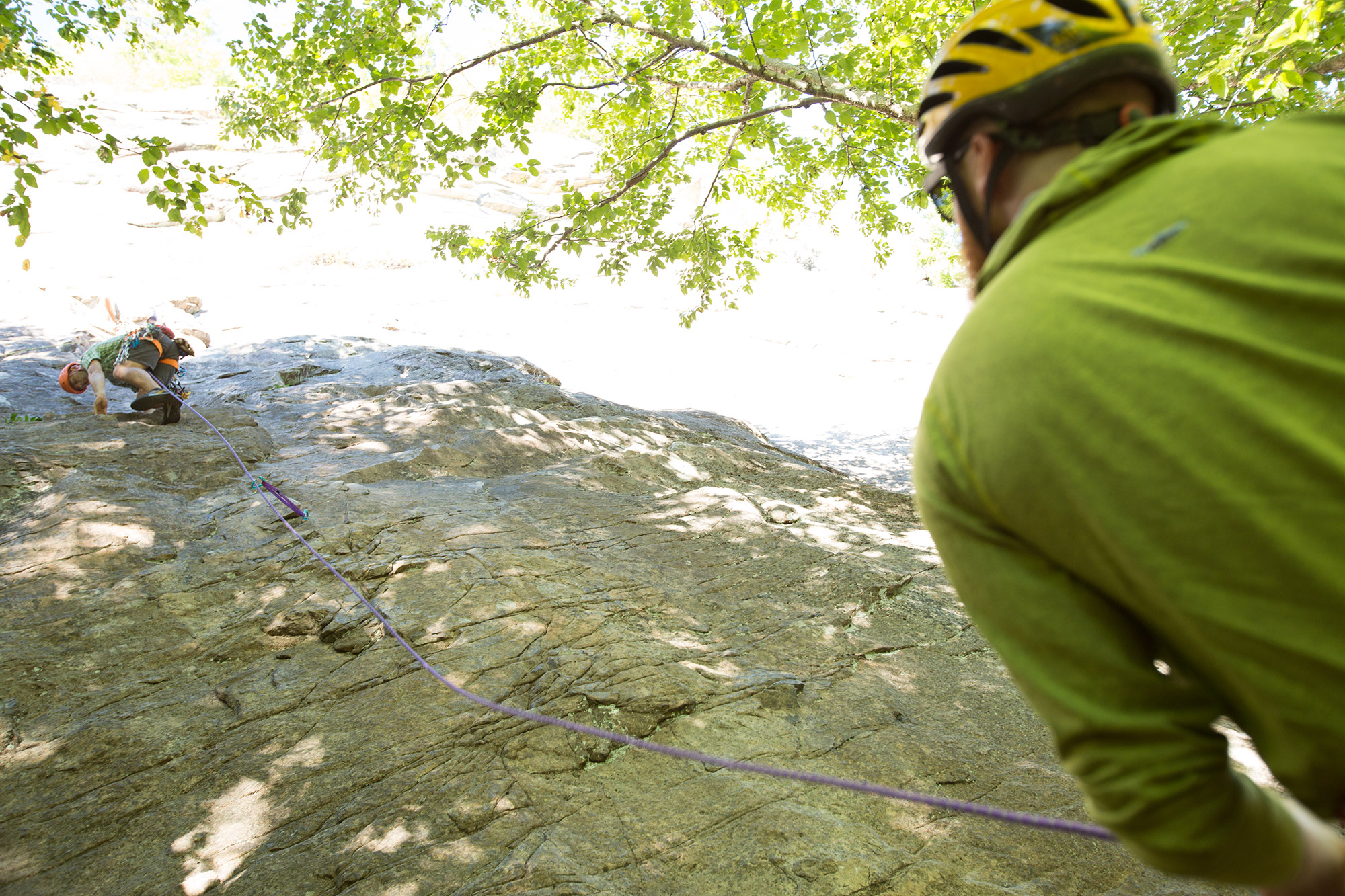
4. Partner Up
No matter if you’re bouldering or top-roping, a good climbing partner is critical. Although bouldering can be a solitary sport, it’s much easier and safer (and more fun!) with a partner. A good bouldering partner spots you when you fall and moves the pads underneath you as you climb. They also are great for helping you decipher moves and keeping the stoke high.
A top-roping partner is essential, as they will literally be holding your life in their hands while belaying. In a perfect world, a new outdoor climber’s partner will have more experience and can serve as a mentor through the transition.
5. Don’t Set Your Expectations Too High
Although gym and outdoor climbing have many similarities, the transition may be challenging. For instance, the grades are harder. So, even if you’ve sent all the “hard stuff” indoors, don’t plan on crushing your first day on real rock. You’ll also need to re-train the way you think. Outdoors, the routes aren’t marked with brightly colored tape and may be difficult to follow. In addition, real rock holds may be hidden and may be greatly different from what you’ve encountered at the gym. Along with these points, indoor climbers often start to learn a gym’s holds. While the gym may change specific routes, climbers have likely gotten familiar with approaching particular holds.
6. If You’re Climbing on a Rope, Learn Some Basic Skills
If you’re going to be climbing on a rope, get familiar with some basic skills. Even something that you’ve been doing in the gym, like belaying, can be complicated outside due to hazards like rocks, uneven ground, and roots. Furthermore, if a climber is heavier than the belayer, the use of a ground anchor might be necessary. Speaking of belays, if you had to execute a belay escape, could you? To prepare, spend a few minutes at the end of each gym session to practice these skills before going outside.
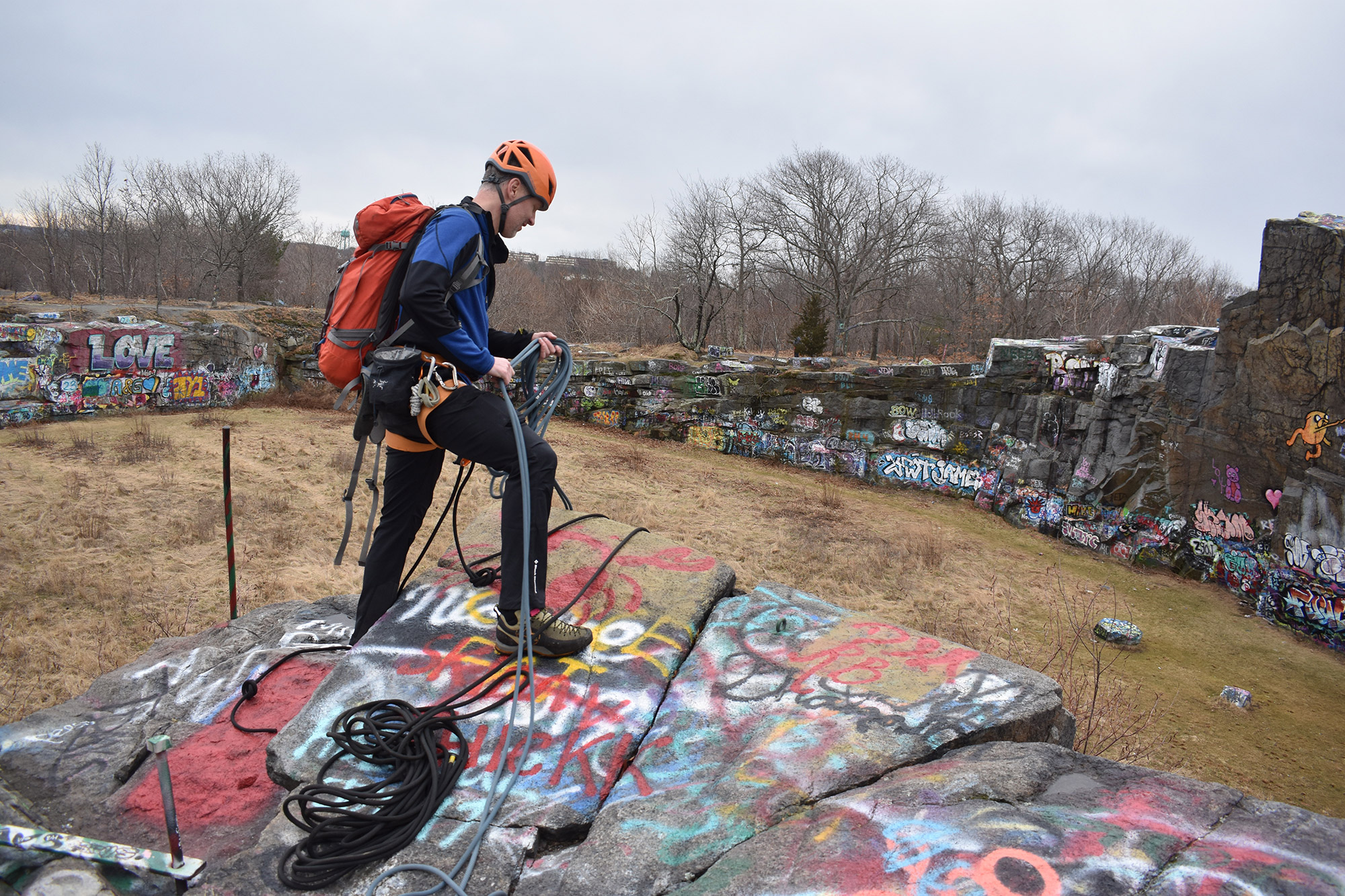
7. Hit the Books (and Not the Guidebook)
Before heading to the crag, take a moment to hit the books, and brush up on the techniques and systems needed for outdoor climbing. A Falcon Guide: Toproping is one of many great books available to new outdoor climbers. For climbers interested in learning to advance their systems, in addition to their skills, to the next level, Mountaineering: The Freedom of the Hills covers everything from basic to advanced topics in all climbing genres.
8. Safety is Critical
Whether you’re climbing inside or outside, the sport is dangerous. But, the outdoors has far more hazards to manage. Here are a few tips to keep you safe:
- Close your top-rope system by tying a knot at the end of your rope. That way, you can’t lower the climber off the end.
- Always be mindful about where the cliff edge is, especially when you’re setting up a top-rope anchor. Anchoring yourself in while building your anchor is a great way to stay safe.
- Rocks break and nearby parties sometimes knock stuff off while they’re setting up. Wear your helmet even when you’re not the one climbing to protect your head.
- Boulderers should scout the descent and be comfortable with it before committing to the climb.
- For boulderers, falling is almost as important of a skill as climbing. Practice correctly falling—ideally, with slightly bent legs to absorb impact, and avoid leading with your hands to protect your shoulders, arms, wrists, and fingers—and spend some time identifying safe landing zones before you head up.
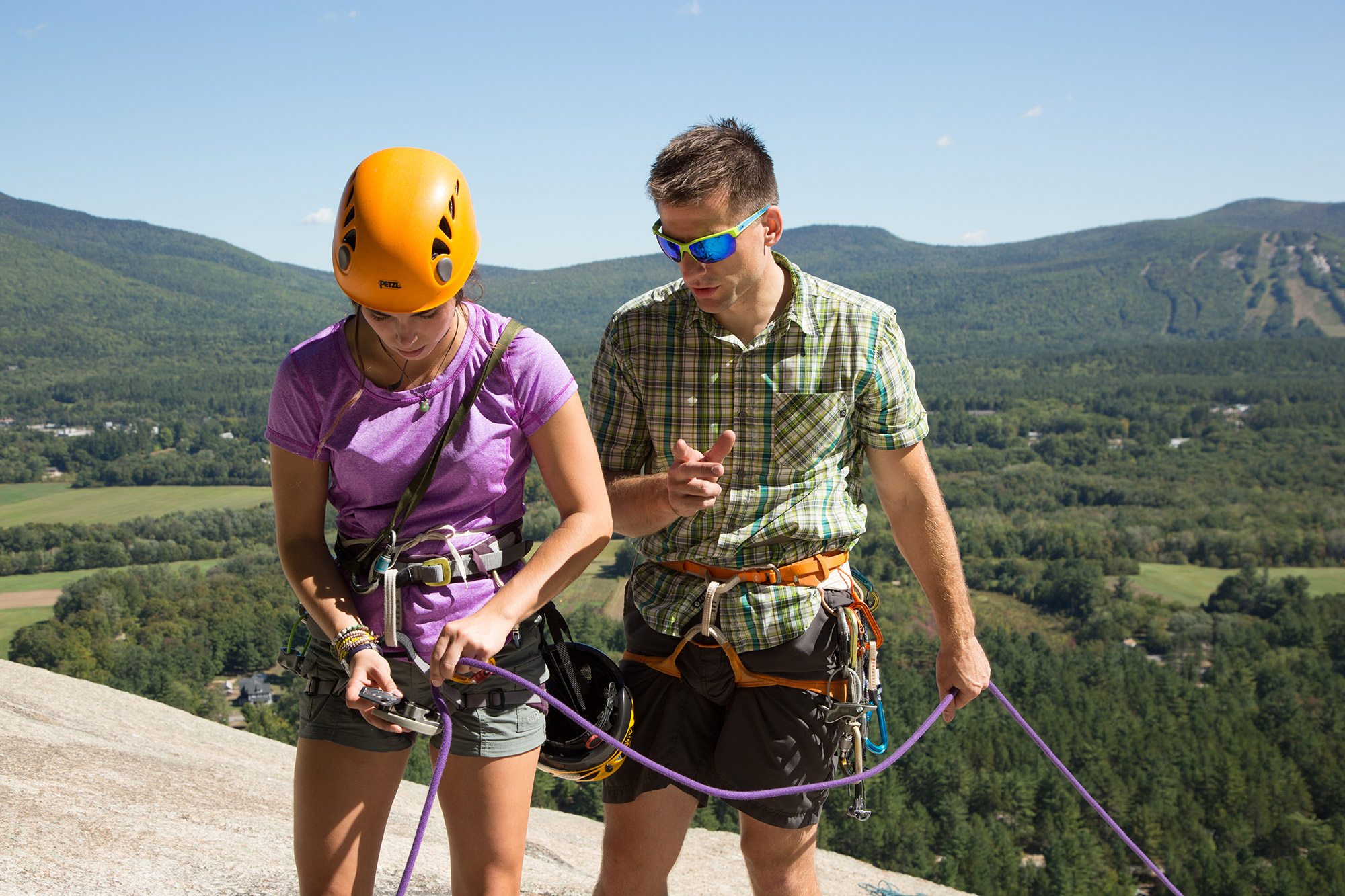
9. Take a Lesson
If you’re interested in getting outside but don’t feel confident doing it yourself, sign up for a lesson with the Eastern Mountain Sports Climbing School. In no time at all, the Climbing School’s AMGA-accredited guides will have you familiar with the fundamentals of building a top-rope anchor and mitigating outdoor climbing hazards.
Can you think of any other gym-to-crag tips? Share them in the comments!
Tim Peck and Doug Martland
Tim and Doug met long ago at the Eastern Mountain Sports in Canton, Massachusetts. Bonding over a love of slick Quincy Quarry granite, White Mountain sufferfests, and scheming up adventures while folding tee-shirts, today Tim and Doug collaborate to write about their favorite outdoor activities and occasionally get nostalgic about tee-shirt tables.




